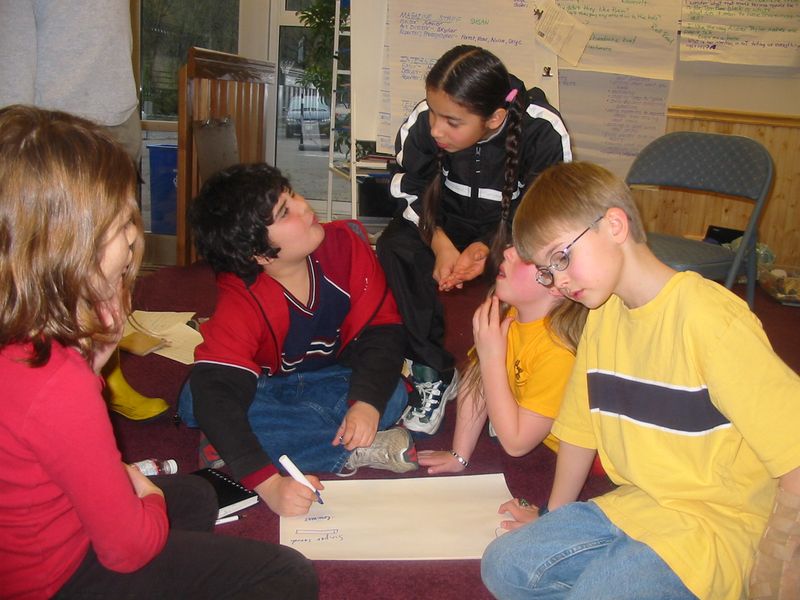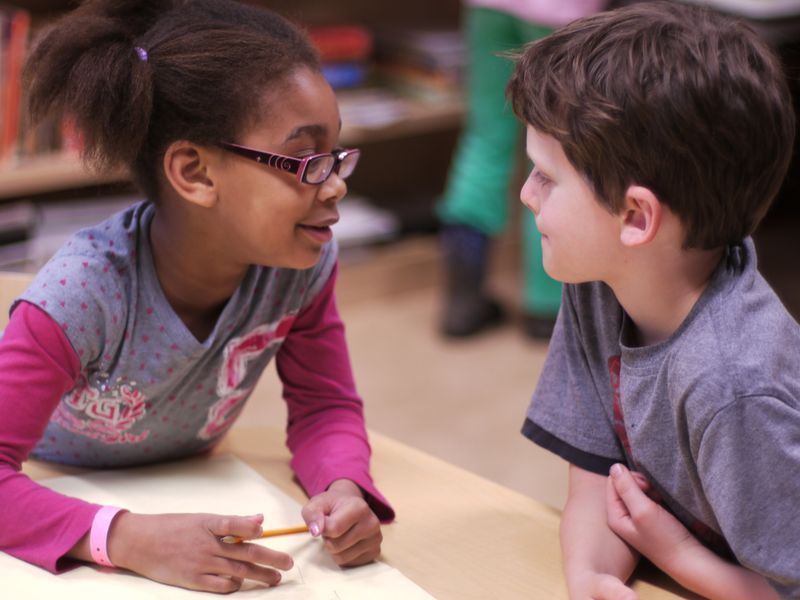Consequences of Gender and Racial Attitudes


Just heard a fantastic presentation by Rebecca Bigler of The University of Texas at Austin, the Director of the Gender and Racial Attitudes Lab. Her research is referenced in this excerpt from the book, Nurtureshock, which we have multiple copies of in the Documentation Studio Library if anyone is interested.
The big takeaway? We have to TALK to kids about the things we want them to know. Our children are growing up in a culture that bombards them with messages, both explicit and implicit. Children work tirelessly to take in this information and build ideas and theories about how the world works and where they belong in it. As children observe the world, what we don't say is just as visible and powerful as what we do say.
We know that children want to belong. They want to connect. And they want to communicate.
We have to talk about race and gender in order to raise non-biased children. And we have to talk about the history of these biases and the hurt they've caused.
But these can be hard conversations to have. Why bother?
Biases affect our memory and influence our mental images.
Biases influence our self-perceptions. Children self-stereotype to make themselves fit, internalizing the stereotypes that are endorsed by our culture.
Biases affect peer relationships. The more you connect with your stereotyped group, the more stereotyped your group becomes. Girls begin to say "I’m a girl, I should hang out with girls", and then they become even more "girly".
Biases affect our academic and career goals. Segregation has enormous implications for children’s goals and the possibilities they see for themselves growing up in the world.
Once children form these biases, they are very hard to change.
At Opal School, we have many stories of ways in which we have worked with children to help them understand the history of bias in this country. Young children are in a stage of cognitive development that tends to lead them to be very black and white thinkers. They want to classify things and to interpret the patterns they see in the world so that that they can make sense of them. The work we do with children to slow down, learn to share and understand the perspective of others, to be reflective inquirers, to be curious, all pushes back against the tendency to classify in strict terms. And it supports habits of mind that are more likely to expect and value complexity. As the children evidenced in this dialogue:
Olive, age 10: Stereotypes are curiosity killers.
Byron, age 10: You are less curious when you think in stereotypes.
Harry, age 10: Stereotypes don’t want people wondering.
Jared, age 9: They want things to be simple, easy, to be right.
Liam, age 9: If you aren't curious, other people get to tell you what to do, push you around.
Tseten, age 10: With no curiosity, then people might do bad things if told to.
Josephine, age 10: Curiosity is the key to wisdom, with this there would be no stereotypes.
Byron, age 10: Complications are worth it. They’re something I should think about to get more knowledge.
What will it look like to take what we've learned in our work with Opal students and create a museum exhibit and/or program that supports parents to learn how to talk about these issues with their children? I'll be chewing on that question and hoping others will join me in the months to come.

